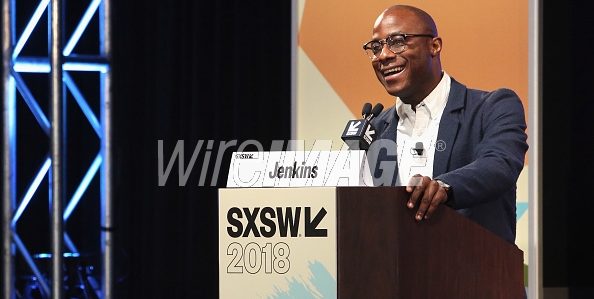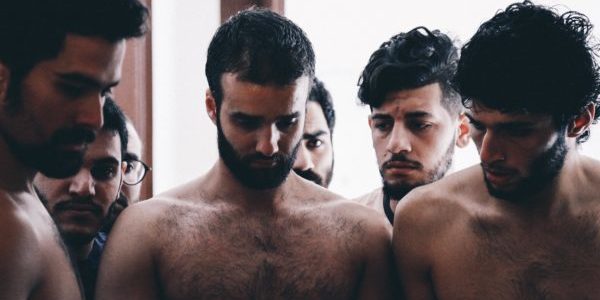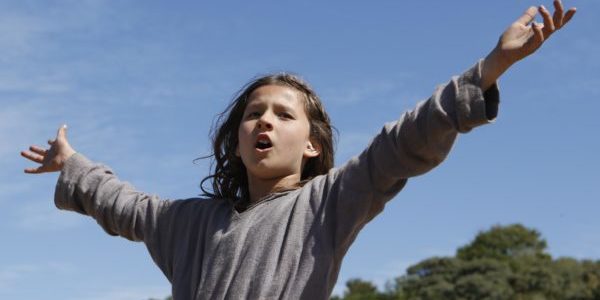Shawn’s SXSW Diary – Sunday: Everything’s Gravy

Midwesterner, movie lover, cinnamon enthusiast.
Sunday morning at the SXSW Conference and Festivals started with a keynote by Barry Jenkins, director of 2017 Academy Awards Best Picture winner, Moonlight. Jenkins started with the vague mention of reading something that he’s never read aloud before.
It was as follows:
“Tarell and I are Chiron. We are that boy. And when you watch Moonlight, you don’t assume a boy who grew up how and where we did would grow up and make a piece of art that wins an Academy Award — certainly don’t think he would grow up to win Best Picture. I’ve said that a lot and what I’ve had to admit is that I placed those limitations on myself. I denied myself that dream — not you, not anyone else — me. And so, to anyone watching this who sees themselves in us, let this be a symbol, a reflection that leads you to love yourself. Because doing so may be the difference between dreaming at all and somehow, through the Academy’s grace, realizing dreams you never allowed yourself to have.”
Jenkins followed it up by saying that’s what he would’ve read upon receiving Best Picture had the ceremony not gone awry.
The keynote was the story of Barry Jenkins, the filmmaker, from the projects to the Oscars, told with a modesty that, rather than feeling false, made success feel approachable. Approachability was important here, because his ultimate aim was to speak to the portion of audience that were young filmmakers — at one point, he asked for a show of hands for all those in attendance under the age of 30 (of which there were many) — and work to empower them, so they don’t get in their own way.

This, like the Westworld panel I attended yesterday, could’ve been a fluffy exercise in humility and inspiration, but procuring Barry Jenkins as a keynote immediately eradicates that possibility. He’s one of those people who can say otherwise rote phrases about “dreams” and “possibilities” without a trace of rehearsal or fraudulence in his oration. Like a good actor to a film, Jenkins brought the speech an emotional honesty that was more than compelling, it was admirable. For an hour, I got the chance to watch this beautifully honest (and dressed) man speak about his life. It was an incredibly moving experience, devoid of bombast.
Eventually, he talked about the filming of Moonlight, in the Miami projects where he grew up, and the children who live in that community today. Alluding to broken windows theory, Jenkins said there are no functioning street lights in the neighborhood, so the kids never play outside once it got dark. However, the bright lights of a film crew brought them out. He lovingly talked about working around them and their non-period-specific clothing, rather than shooing them away from the set.
In a touching conclusion that feels dumb to even type in words, Jenkins talked about a moment when he turned around after a shot to see the children fully ingrained in the production. They were huddled at the video village, watching the shoot. He said if he was crying at the Oscars, or directly after, backstage, it was because he was thinking of those children and how, unlike he had done too many times as a boy from the Miami projects, they weren’t getting in their own way.
A Conversation with Olivier Assayas

Directly following Jenkins’ keynote, I was able to catch a conversation between local celebrity Richard Linklater and French auteur Olivier Assayas. The conversation was loose with no clear through-line, except the cinema of Assayas, which is quite wide-ranging.
What ensued, through talking about Assayas’ films, collaborations and former career as a writer for Cahiers du Cinema, was what had to have been one of the most film nerdy events at SXSW. Assayas talked the values and inspiration he finds in Chinese genre films, which he helped bring to Western audiences in the 1980’s.
In the same vein, he touched on being one of the first Western writers to interview Taiwanese legends Hou Hsiao-Hsien and Edward Yang. He’s also been credited with bringing Maggie Cheung to more Western audiences through his 1996 film Irma Vep (and then again with 2004’s Clean). He spoke very highly of Cheung, whom he was previously married to, and the work she did in the film.
After Linklater asked the director about his relationship to genre films, Assayas talked about the relationship to the audience’s physical body that many genre films have, such as horror. He said it’s important not to forget, as a director, that you have the opportunity to connect with the audience’s body, not solely their mind. He noted John Carpenter, Wes Craven and David Cronenberg as particular influences before he and Linklater geeked out about the daring power of Videodrome.
It was odd seeing something so specific and light directly after Jenkins’ keynote, but it worked as a nice palate cleanser.
Martyr (Mazen Khaled)

My second film of the festival was the Lebanese film Martyr, directed by Mazen Khaled, about a young man, Hassan, who’s treading water. He’s frustrated — unemployed and living in his parent’s living room — and spends most of his time hanging out with friends on the edge of the city, where Beirut meets the Mediterranean Sea. Eventually, Hassan tragically dies after jumping into the sea and drowning.
The remainder of the film focuses on Hassan’s friend’s methodically and lovingly taking care of his body — rescuing him, bringing him home, cleaning his skin. The film is ultimately about the male body. Khaled’s focus on Hassan’s physical form, both before and after death, is remarkable.
Prior to the tragic death, we see small shoulder rubs and other meaningful touches exchanged between the men. After the screening, Khaled said the environment where the film is placed, the edge of the city, is a homosocial environment that has fascinated him. He said that Hassan and one of his friends might’ve been lovers in a different lifetime, which the text bears out without condescending to its audience.
The centerpiece of the film is the process of the men carefully cleaning his body, shot with minute detail. The care they show him, and each other in the process, is a beautiful, devastating thing, and so uncommonly processed in film. Khaled articulated it well, saying it took Hassan dying for him to be truly touched.
Martyr is a small and devastating film and its quiet depiction of homosocial love and homoerotic frustration will stick with me for quite a while.
Jeannette: The Childhood of Joan of Arc (Bruno Dumont)

Going into Bruno Dumont’s latest, Jeannette: The Childhood of Joan of Arc, I knew it was divisive. I knew it made the top of Cahiers’ Best of 2017 list, while being called “unbearable” and “empty provocation” by other outlets. What I didn’t know is that the film is a 15th century nu metal comedy musical biopic of young Joan of Arc.
As insane as that sounds, I assure you, I am unable to dutifully describe how batshit crazy this movie is. It’s essentially plotless; we watch Jeannette walk around a sandy creek in the French countryside, sheep abound, while she speaks and sings incessantly about the futility of suffering and war. Every so often, she stops singing to tap dance in the sand and headbang to the film’s hilarious score. I don’t know if it was Dumont’s intention or not to make a film diametrically opposite Dreyer’s The Passion of Joan of Arc, but if it was, he succeeded.
Dumont’s comedic timing and restraint is quite remarkable. As I was watching, I found myself recalling Assayas’ sentiments from earlier in the day regarding the physical connection a film can make with its audience. The laughs Jeannette: The Childhood of Joan of Arc draws are not heady, intellectual smirks, but full-body guffaws. I’m not sure if I’ve seen a film so outrageously committed to deadpan. I know I talked about odd moments of dissonance in yesterday’s diary entry, but I can’t think of another film so willing to relish in its wicked dissonance. I should also mention that the film is beautifully shot by Guillaume Defffontaines.
I think about a dozen people left during the film (probably would’ve been more had they not had open tabs with their Alamo Drafthouse server), and while I understand that the film is quite weird and not for everyone, I have a hard time understanding the ability or desire to look away from it.
Does content like this matter to you?
Become a Member and support film journalism. Unlock access to all of Film Inquiry`s great articles. Join a community of like-minded readers who are passionate about cinema - get access to our private members Network, give back to independent filmmakers, and more.













